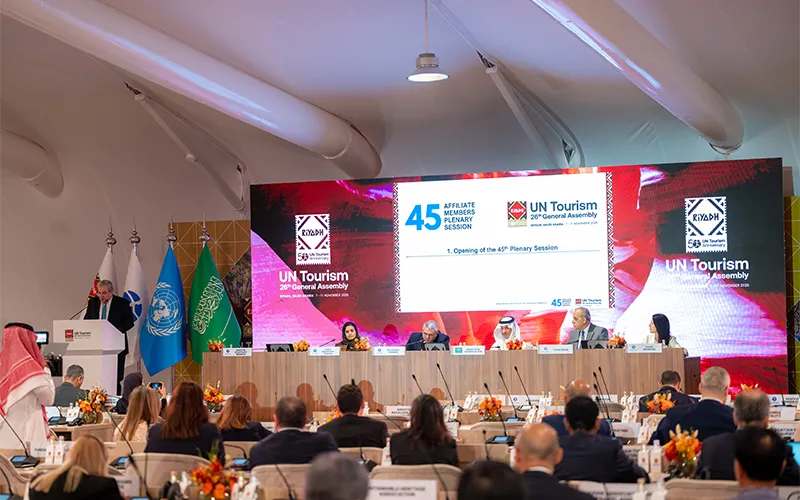Graphjet Technology Welcomes Delegation from Japanese Trading Company to Discuss Sustainable Graphite Collaboration – Quiver Quantitative

Report on Strategic Engagement for Sustainable Graphite Production
Introduction: Fostering Global Partnerships for Sustainable Development
On July 23, 2025, Graphjet Technology hosted a delegation from a prominent Japanese trading company to explore a strategic partnership focused on the supply of sustainable graphite. This engagement underscores a growing global demand for materials produced through environmentally responsible methods, directly aligning with the United Nations Sustainable Development Goals (SDGs). The visit centered on Graphjet’s innovative technology that converts agricultural waste into high-value synthetic graphite, representing a significant step towards decarbonizing critical supply chains.
Alignment with Sustainable Development Goals (SDGs)
The collaboration between Graphjet Technology and the Japanese trading house directly supports several key SDGs:
-
SDG 9: Industry, Innovation, and Infrastructure
- Graphjet’s patented process is a prime example of green innovation, upgrading industrial capability for sustainable manufacturing.
- The partnership aims to build resilient and sustainable supply chain infrastructure for next-generation technologies.
-
SDG 12: Responsible Consumption and Production
- The technology establishes a sustainable production pattern by utilizing palm kernel shells, an agricultural waste product, as its primary feedstock.
- This circular economy model minimizes waste and reduces reliance on finite natural resources traditionally used in graphite production.
-
SDG 13: Climate Action
- The production method significantly lowers carbon emissions compared to conventional graphite synthesis, contributing directly to climate change mitigation.
- By providing a greener alternative for industries like electric vehicles and energy storage, it supports broader decarbonization efforts.
-
SDG 17: Partnerships for the Goals
- This engagement exemplifies a global partnership between a Malaysian technology innovator and a major Japanese industrial entity.
- The collaboration aims to leverage mutual strengths to achieve shared sustainable development objectives and advance green technology on a global scale.
Technological and Procedural Overview
The core of the discussion was Graphjet’s proprietary and patented technology. The key aspects of this sustainable process include:
- Feedstock Utilization: The process uses palm kernel shells, a renewable and abundant agricultural byproduct in Malaysia, transforming waste into a valuable resource.
- Production Process: A patented method synthesizes high-purity graphite, offering a sustainable alternative to mining or fossil fuel-based production.
- Quality Assurance: The delegation toured Graphjet’s R&D and production facilities, observing the stringent quality control systems that ensure the material meets the high standards required by customers in sectors such as advanced machinery and aerospace.
Details of the Engagement
The official visit served to establish a foundation for a future commercial relationship. The Japanese delegation, representing a firm with over 75 years of history and annual revenues of approximately ¥30 billion, expressed strong interest in integrating Graphjet’s sustainable graphite into its supply chain. This trading house serves industry leaders like Toshiba and Hitachi, and its adoption of Graphjet’s material would signify a major industry shift towards sustainable sourcing.
Chris Lai, CEO of Graphjet, stated, “This engagement marks a meaningful step forward in strengthening mutual understanding and laying the groundwork for future collaboration in the field of sustainable graphite and next generation technology.”
Conclusion and Future Outlook
The potential partnership between Graphjet Technology and the Japanese trading company represents a pivotal advancement in the sustainable materials sector. By commercializing a technology that aligns with core principles of the circular economy and climate action, Graphjet is positioned to become a key player in the global green supply chain. This collaboration is a model for how targeted innovation and international partnerships (SDG 17) can drive progress towards a more sustainable and responsible industrial future (SDG 9 and SDG 12).
Analysis of Sustainable Development Goals in the Article
1. Which SDGs are addressed or connected to the issues highlighted in the article?
The article on Graphjet Technology’s innovation and potential partnership touches upon several Sustainable Development Goals (SDGs). The core themes of sustainable production, green technology, waste reduction, climate action, and international collaboration directly link to the following SDGs:
- SDG 9: Industry, Innovation, and Infrastructure: The article focuses on Graphjet’s “innovative graphene and graphite producer” status, its “patented technology,” and “R&D production facilities.” This highlights the development of sustainable and resilient infrastructure and the promotion of inclusive and sustainable industrialization through green innovation.
- SDG 12: Responsible Consumption and Production: This is a central theme, as Graphjet’s technology uses “palm kernel shells,” a “waste agricultural product,” as a “renewable feedstock.” This directly addresses sustainable production patterns by recycling and reusing waste materials, creating a circular economy model for graphite production.
- SDG 13: Climate Action: The article explicitly states that the patented process “significantly reduce[s] carbon emissions compared to traditional graphite production methods.” This directly contributes to climate change mitigation efforts and aligns with global goals for “decarbonization.”
- SDG 17: Partnerships for the Goals: The entire premise of the article is the visit of a “Japanese trading company” to Graphjet in Malaysia to discuss collaboration. It emphasizes “strengthening mutual understanding,” “future collaboration,” and “building strong partnership with global industry leaders,” which are key aspects of forming partnerships to achieve sustainable development.
2. What specific targets under those SDGs can be identified based on the article’s content?
Based on the activities and technologies described, several specific SDG targets can be identified:
- Target 9.4: “By 2030, upgrade infrastructure and retrofit industries to make them sustainable, with increased resource-use efficiency and greater adoption of clean and environmentally sound technologies and industrial processes…”
- Explanation: Graphjet’s technology represents a “clean and environmentally sound” industrial process for producing graphite. The article’s mention of “green manufacturing” and a process that reduces emissions is a direct effort to retrofit the graphite industry to make it more sustainable.
- Target 12.5: “By 2030, substantially reduce waste generation through prevention, reduction, recycling and reuse.”
- Explanation: The company’s core innovation is its “patented technology to recycle palm kernel shells generated in the production of palm seed oil.” This is a clear example of reducing waste generation by recycling and reusing an agricultural byproduct that would otherwise be considered waste.
- Target 13.2: “Integrate climate change measures into national policies, strategies and planning.”
- Explanation: While the article focuses on a company, its technology is a tangible climate change mitigation measure. By developing a process that “significantly reduce[s] carbon emissions,” Graphjet is contributing to the broader goal of decarbonization, which is a key strategy in climate action plans.
- Target 17.17: “Encourage and promote effective public, public-private and civil society partnerships, building on the experience and resourcing strategies of partnerships.”
- Explanation: The article details a developing private-private partnership between Graphjet (a Malaysian company) and a “renowned Japanese enterprise.” This international collaboration aims to advance “sustainable progress in the graphite and graphene sector,” showcasing a partnership for sustainable technology.
3. Are there any indicators mentioned or implied in the article that can be used to measure progress towards the identified targets?
The article implies several indicators that could be used to measure progress, even if it does not provide specific quantitative data:
- Indicator for Target 9.4 & 13.2 (CO2 Emissions): The article states the technology leads to a “significant reduction in carbon emissions.” A key performance indicator would be the amount of CO2 emissions per unit of graphite produced, compared to “traditional graphite production methods.” This directly relates to the official indicator 9.4.1 (CO2 emission per unit of value added).
- Indicator for Target 12.5 (Waste Recycling): The use of “palm kernel shells” as the primary feedstock is a measurable activity. An indicator would be the volume or tonnage of palm kernel shells recycled annually to produce graphite. This would measure the extent of waste reduction and reuse.
- Indicator for Target 17.17 (Partnerships): The establishment of a formal agreement between Graphjet and the Japanese trading company would be a primary indicator. Further metrics could include the financial value of the partnership (e.g., investment, trade volume) and the amount of “sustainable graphite materials” supplied through this collaboration. The article notes the Japanese firm’s “annual revenue of around ¥30 billion,” suggesting the potential scale of such a partnership.
4. Summary of SDGs, Targets, and Indicators
| SDGs | Targets | Indicators |
|---|---|---|
| SDG 9: Industry, Innovation, and Infrastructure | Target 9.4: Upgrade industries to make them sustainable and increase the adoption of clean and environmentally sound technologies. | Amount of CO2 emissions reduced per unit of graphite produced compared to traditional methods. |
| SDG 12: Responsible Consumption and Production | Target 12.5: Substantially reduce waste generation through recycling and reuse. | Volume/tonnage of palm kernel shells (agricultural waste) recycled into graphite. |
| SDG 13: Climate Action | Target 13.2: Integrate climate change measures into strategies and planning. | The development and commercialization of a low-carbon production technology that supports decarbonization efforts. |
| SDG 17: Partnerships for the Goals | Target 17.17: Encourage and promote effective private-private partnerships for sustainable development. | Establishment of a formal collaboration/supply agreement between Graphjet and the Japanese trading company for sustainable materials. |
Source: quiverquant.com

What is Your Reaction?
 Like
0
Like
0
 Dislike
0
Dislike
0
 Love
0
Love
0
 Funny
0
Funny
0
 Angry
0
Angry
0
 Sad
0
Sad
0
 Wow
0
Wow
0











































































